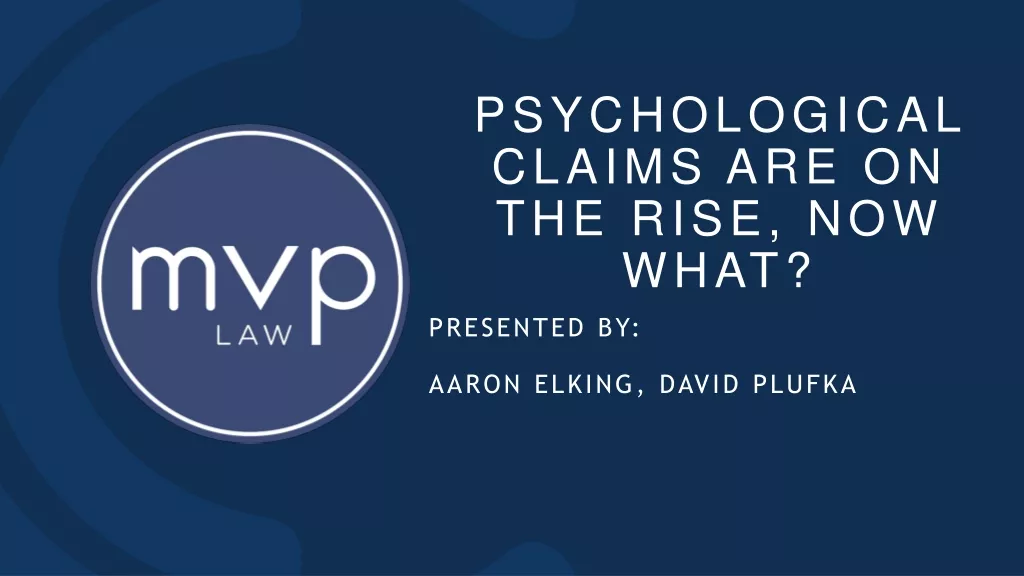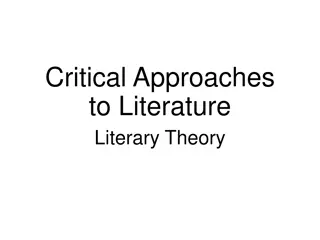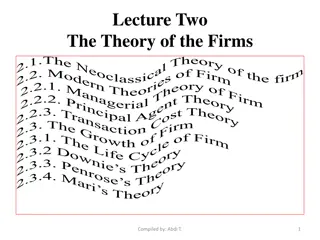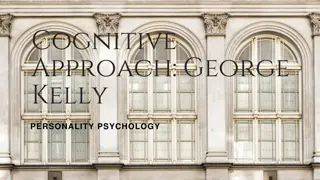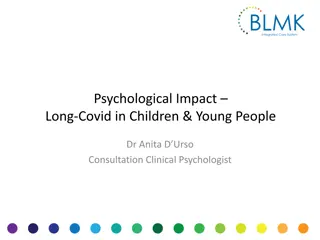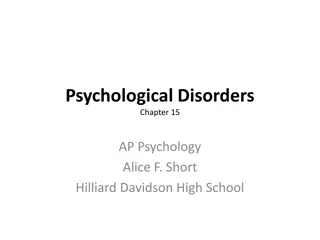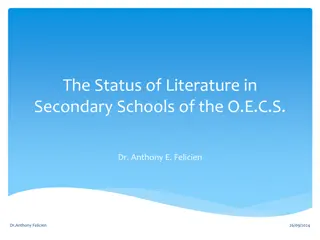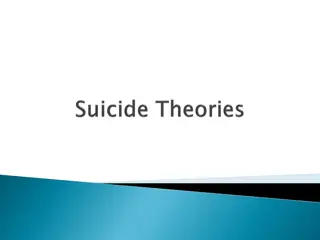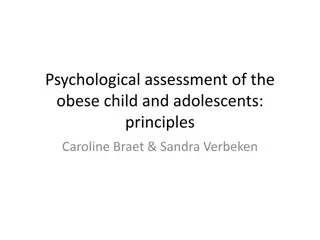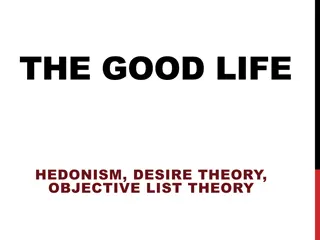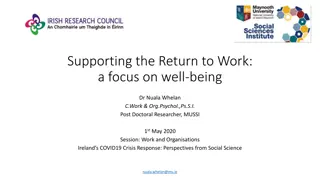Overview of Psychological Theory in Literature
Psychological theory in literature encompasses two critical viewpoints - one focusing solely on the text itself and the other on the author. The first approach delves into conflicts, characters, dream sequences, and symbols present in the work, revealing inner desires and conflicts within characters. The theory also explores Oedipal connotations, subconscious desires expressed in dreams, and the three parts of the subconscious: id, ego, and superego.
Download Presentation

Please find below an Image/Link to download the presentation.
The content on the website is provided AS IS for your information and personal use only. It may not be sold, licensed, or shared on other websites without obtaining consent from the author. Download presentation by click this link. If you encounter any issues during the download, it is possible that the publisher has removed the file from their server.
E N D
Presentation Transcript
Psychological Theory The Psychological encompasses two almost contradictory critical theories. The first focuses on the text itself, with no regard to outside influences; the second focuses on the author of the text.
Psychological Theory According to the first view, reading and interpretation are limited to the work itself. One will understand the work by examining conflicts, characters, dream sequences, and symbols.
Psychological Theory One will further understand that a character s outward behavior might conflict with inner desires or might reflect as-yet-undiscovered inner desires.
Main Areas of Study/Points of Criticism of the First View There are strong Oedipal connotations in this theory: the son s desire for his mother the father s envy of the son and rivalry for the mother s attention the daughter s desire for her father the mother s envy of the daughter and rivalry for the father s attention. Of course, these all operate on a subconscious level to avoid violating serious social mores.
Main Areas of Study/Points of Criticism of the First View There is an emphasis on the meaning of dreams. It is in dreams that a person s subconscious desires are revealed. What a person cannot express or do because of social rules will be expressed and accomplished in dreams, where there are no social rules. Most of the time, people are not even aware what they secretly desire until their subconscious goes unchecked in sleep.
According to psychological theory, there are three parts to the subconscious, which is the largest part of the human personality . . . The id the basic desire. The id has no sense of conscience, thus making it everyone s inner child. Children, before they are taught social skills, operate entirely through the id. They cry in public, perform bodily functions with no sense of shame, and demand immediate gratification of their needs and desires.
According to psychological theory, there are three parts to the subconscious, which is the largest part of the human personality . . . The superego the opposite of the id. The superego is the repository of all socially imposed behavior and sense of guilt. While the id is innate, the superego is learned. Humans develop a superego by having parents scold them and other members of society teach them. How one is socialized by punishment and shame will have a lifelong impact on the functioning of his or her subconscious.
According to psychological theory, there are three parts to the subconscious, which is the largest part of the human personality . . . The ego reality. The ego struggles to achieve a balance between the id and the superego. The ego takes the desires of the id, filters them through the superego, and devises an action that satisfies both. The ego realizes that the id must be satisfied but that there are certain socially acceptable ways to achieve satisfaction.
According to psychological theory, there are three parts to the subconscious, which is the largest part of the human personality . . . The ego reality. This theory asserts that psychological problems are all the result of imbalances between the id, superego, and ego.
Main Areas of Study/Points of Criticism of the Second View An essential relationship exists between the author of the work and the work itself. In order to understand a work, one must fully understand the author s life and values. Although a work might not be blatantly autobiographical, psychoanalysts argue that there is always something of the author in the work, whether it be a character, character trait, theme, or motif.
This Type of Psychological Reading Includes the Following: Reference to what is known or surmised about the author s personality is used to explain and interpret a literary work. For example, Charles Dickens grew up poor and later wrote books sympathetic to boys growing up poor. Reference to a literary work is made in order to establish an understanding of the mind of the author. For example, judging by Harper Lee s To Kill a Mockingbird, one might reasonably conclude that Harper Lee herself was sympathetic to the plight of black Americans.
This Type of Psychological Reading Includes the Following: Studying the literary work of an author is a means of knowing the author as a person. The more novels by Charles Dickens one reads, the more one can infer about the author s beliefs, values, hopes, fears, etc.
This Type of Psychological Reading Includes the Following: An artist may put his or her repressed desires on the page in the form of actions performed by characters. For example, an author who consistently writes stories in which his female characters are weak, dependent, or unintelligent might be expressing latent misogynist tendencies. Likewise, a female author might express her latent misandry through weak, blatantly evil, or thoroughly inconsequential male characters.
Essential Questions 1. What are the traits of the main character? How does the author reveal those traits? 2. What do you learn about the character from the way other characters relate to him or her? What discrepancies exist between the author s portrayal of the character and how other characters react to him or her? What discrepancies exist between the author s portrayal of the character and the reader s inferences?
Essential Questions 3. Is the main character a dynamic character (does he or she change throughout the course of the story)? If so, how and why? How does the character view him or herself? Is there any discrepancy between a character s personal opinion of him or herself and how others think about him or her? 4. What discrepancies exist between a character s view of him or herself and other characters reactions, the author s portrayal, and/or reader inference?
Essential Questions 5. What types of relationships exist in the work? 6. What types of images are used in conjunction with the character? What do they symbolize? What symbols are used in the course of the story? What do they symbolize?





